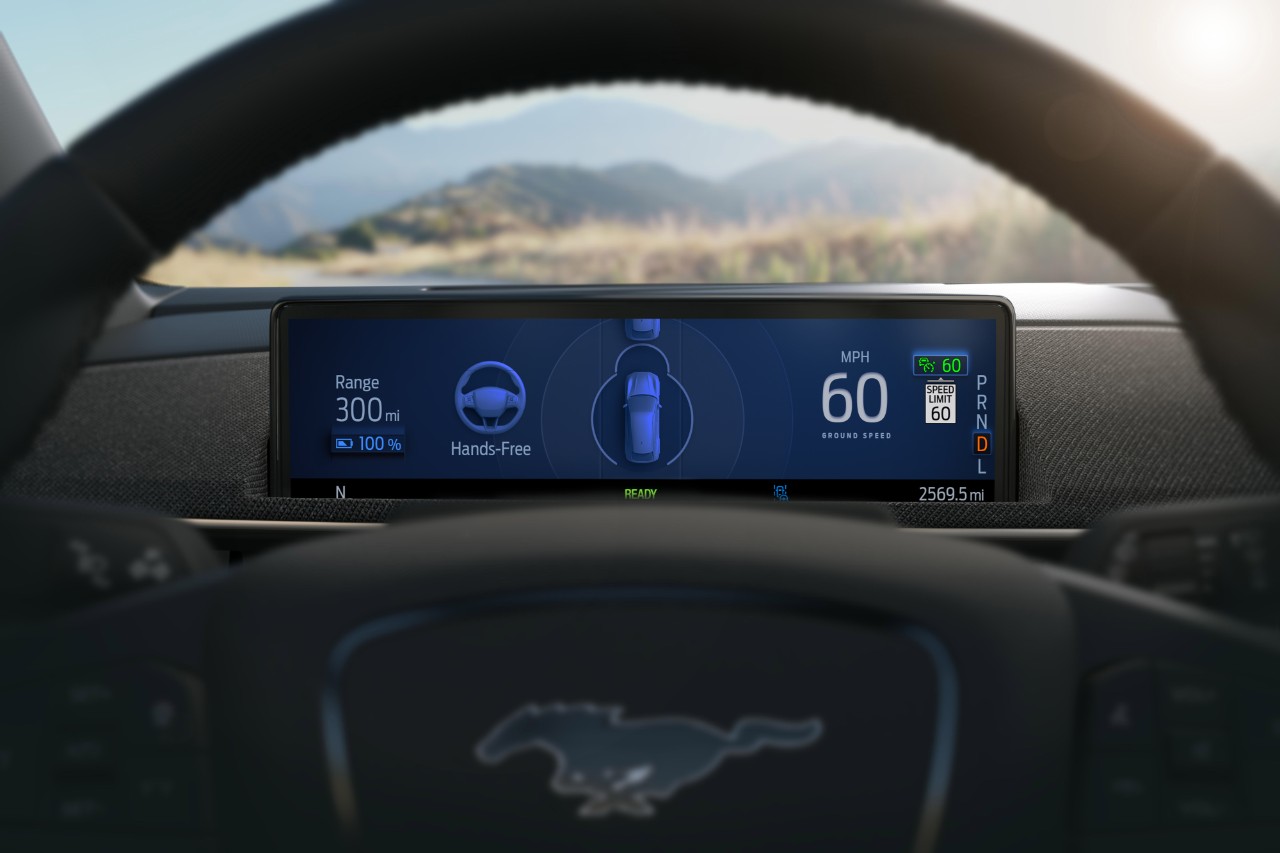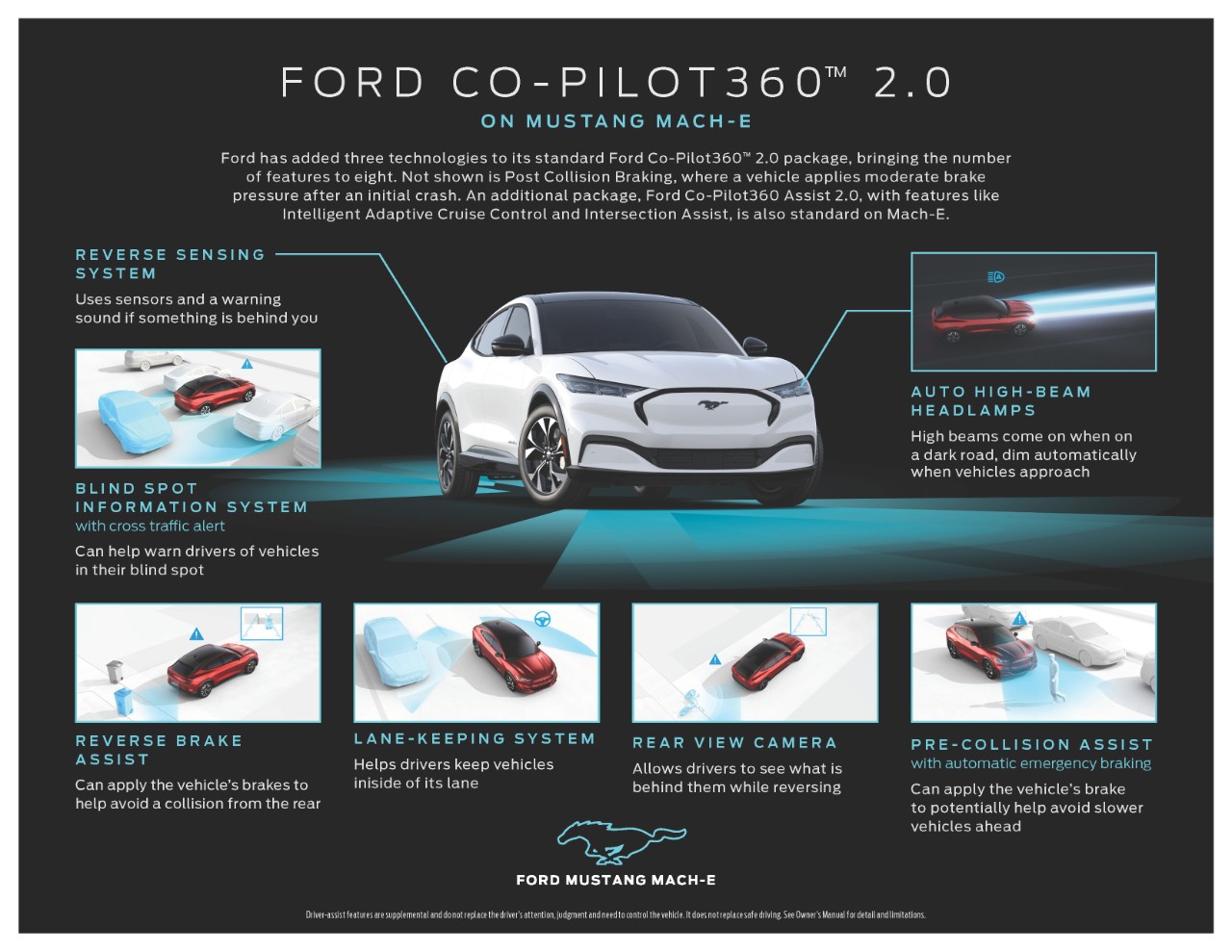Yesterday, the blue oval announced that it will be adding the extra hardware and software functionality to its Co-Pilot360 advanced driver assist system (ADAS) next year. The new tech will let drivers hand over a significant amount of control to the vehicle and drive “hands-free,” however, drivers must remain cognizant of the road at all times. [Read: Lyft gives itself a comfortable 10-year deadline to make all its vehicles electric] Ford’s all-electric Mustang Mach-E sports utility vehicle will be the first to get the new tech in late 2021. Customers will be able to purchase the Co-Pilot 360 Active 2.0 Prep Package on the Mach-E this year and add the Active Drive Assist function later for an additional fee, which Ford will offer as an over-the-air update — kind of like how Tesla updates its Autopilot software. There’s no mention of how much these systems are going to cost right now, though. While it’s easy to think this and Tesla’s Autopilot as one and the same, there are some subtle differences. Ford says that its Active Drive Assist can be used hands-free on 100,000 miles (around 161,000 km) of divided highways in the US and Canada. This isn’t something Tesla’s can legally do yet, even if the vehicles seem capable. Ford hasn’t actually clarified what stretches of road it’s talking about, but considering there are over 164,000 miles of national highway in the US, that’s a sizeable chunk that’s been given the all clear. Presumably, the American automaker has identified roads with a predictable environment to ensure safe and appropriate use of the tech. Driver’s won’t be able to activate the feature unless driving on these sections of road. It should help prevent misuse of the tech. Tesla’s Autopilot also isn’t geo-fenced like Ford’s is, meaning it can be used on all kinds of roads whether it’s actually deemed safe or not.
What is Co-Pilot360?
Ford’s Co-Pilot360 began as a collection of Advanced Driver Assist Systems, like collision warning, lane departure warnings, adaptive cruise control, automatic parking, automatic emergency brakes, speed and road sign recognition, and blind spot detection. With the addition of a driver monitoring system, Ford can enable all of these technologies simultaneously to give the impression that the car is driving itself, in certain circumstances. Ford’s system appears to be a Level 3 “hands and eyes off” system when fully engaged, but drivers must always supervise the vehicle so in reality it’s a Level 2 tool. Tesla’s Autopilot is also classed as Level 2. In Ford’s system, “the driver has to pay attention constantly,” said human-machine interaction and vehicle automation researcher, Liza Dixon. The “levels” are about human supervision, not what the technology can do, she added. While you can take your hands off the wheel in the Ford, the system still requires full human awareness to operate safely. The key difference in Level 3 systems is that drivers can take their hands off the steering wheel when certain conditions, on specific sections of road, are met. Level 3 is otherwise known as conditional automation, importantly though, it’s not full automation. Unlike Tesla, Ford’s system will come with an infrared driver monitoring system (DMS) that actively tracks a driver’s eye gaze and head position to ensure they’re actually paying attention to the road. Tesla vehicles only use steering wheel mounted sensors to check the driver is holding the controls, it’s not a particularly robust system in comparison. If Ford’s DMS works all the time, and not just when “hands-free” mode is enabled, it could help to make equipped vehicle’s significantly safer than non-DMS enabled vehicles. DMS systems are a vital part of ensuring drivers actually trust the autonomous capabilities of their vehicle. They’re also a crucial safety component to prevent misuse of the nascent tech. [Read: Autonowashing and the dangers of putting too much trust in ‘self-driving’ cars] “The DMS is really the final step in calibrating trust,” Dixon said in a recent interview with TNW. Ford says that if the DMS thinks the user is not paying attention, the car will alert the driver or slow down until the driver resumes control. The US automaker claims that all this tech, and the inclusion of a hand-off driver monitoring system, will help build consumer confidence in semi-autonomous driving tech. Really though, to do that, this system will have to prove itself in the real world and Ford will have to educate its customers. On more than one occasion, surveys have found that American drivers are apprehensive of semi-autonomous driving tech, not because of the tech itself, but mostly because they don’t completely understand it. If Ford wants to best the likes of Tesla’s Autopilot or General Motors’ Cruise ADAS tech, it should invest time in educating its customers on exactly what the technology is, how it works, and what it does. Also, as consumers we shouldn’t see Ford’s Co-Pilot360 as comparable to Tesla’s Autopilot, the two are different systems, with different capabilities and limitations. Drivers need to be aware of this. As Ford points out in its Active Drive Assist announcement: “driver-assist features are supplemental and do not replace the driver’s attention, judgment and need to control the vehicle. It does not replace safe driving. See Owner’s Manual for detail and limitations.” For the safety of other road users, let’s hope people actually do RTFM.


